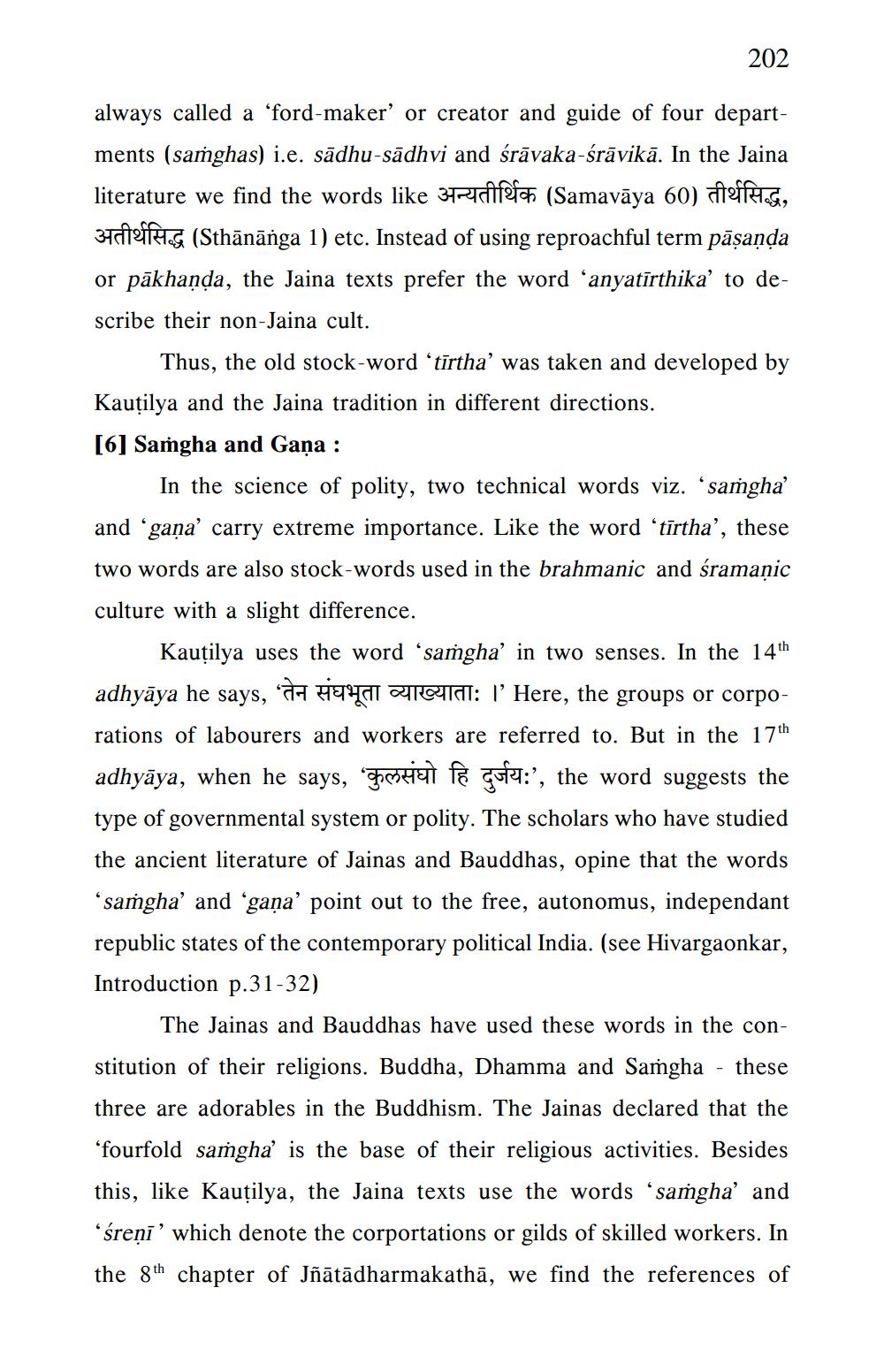________________
202
always called a 'ford-maker' or creator and guide of four departments (samghas) i.e. sadhu-sadhvi and śrāvaka-śravikā. In the Jaina literature we find the words like अन्यतीर्थिक (Samavāya 60) तीर्थसिद्ध, 3fff (Sthānanga 1) etc. Instead of using reproachful term pāṣaṇḍa or pakhanda, the Jaina texts prefer the word 'anyatirthika' to describe their non-Jaina cult.
Thus, the old stock-word 'tirtha' was taken and developed by Kautilya and the Jaina tradition in different directions.
[6] Samgha and Gaṇa :
In the science of polity, two technical words viz. ‘samgha' and 'gana' carry extreme importance. Like the word 'tīrtha', these two words are also stock-words used in the brahmanic and śramanic culture with a slight difference.
Kautilya uses the word 'samgha' in two senses. In the 14th adhyāya he says, ‘तेन संघभूता व्याख्याताः ।' Here, the groups or corporations of labourers and workers are referred to. But in the 17th adhyāya, when he says, ff:', the word suggests the type of governmental system or polity. The scholars who have studied the ancient literature of Jainas and Bauddhas, opine that the words 'samgha' and 'gana' point out to the free, autonomus, independant republic states of the contemporary political India. (see Hivargaonkar, Introduction p.31-32)
The Jainas and Bauddhas have used these words in the constitution of their religions. Buddha, Dhamma and Samgha - these three are adorables in the Buddhism. The Jainas declared that the 'fourfold samgha' is the base of their religious activities. Besides this, like Kautilya, the Jaina texts use the words 'samgha' and 'śreṇī' which denote the corportations or gilds of skilled workers. In the 8th chapter of Jñātādharmakatha, we find the references of




